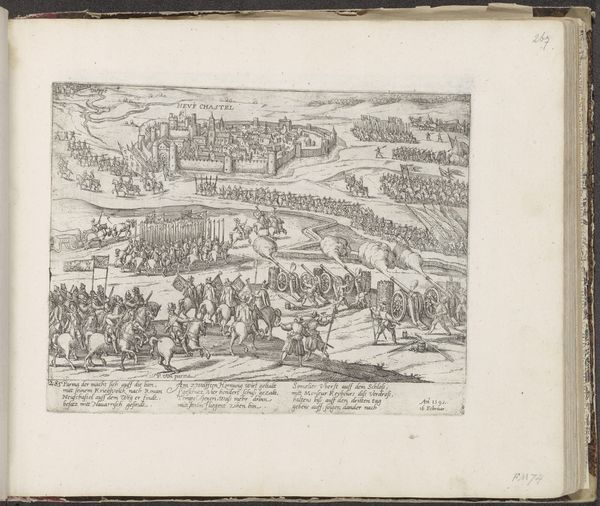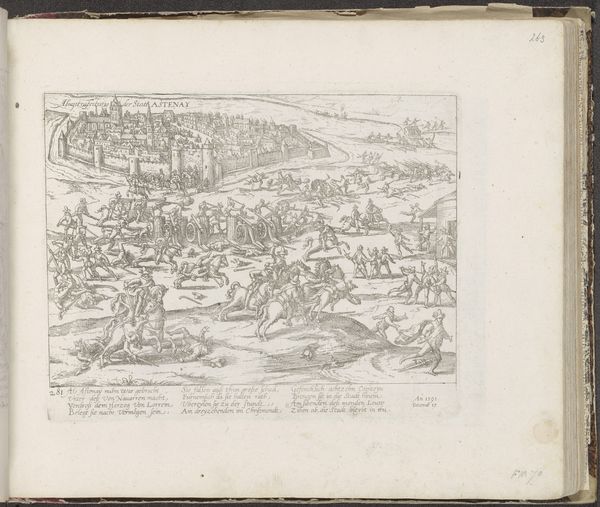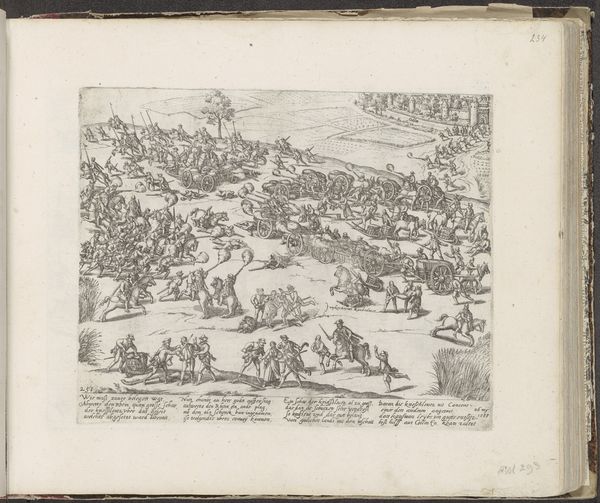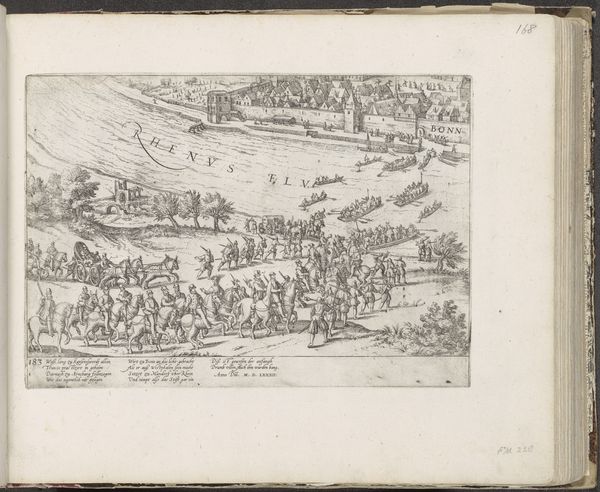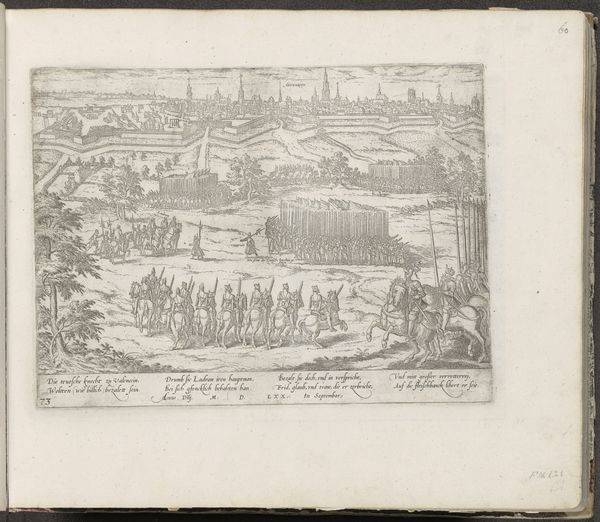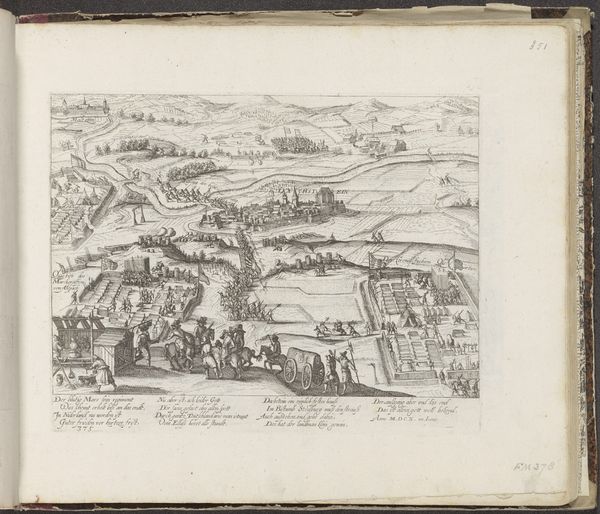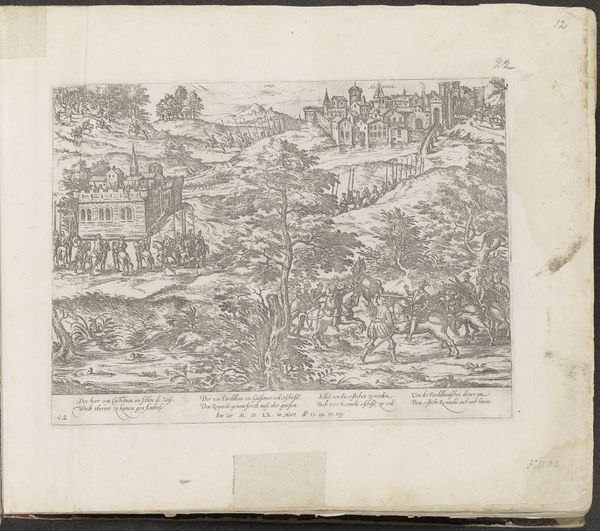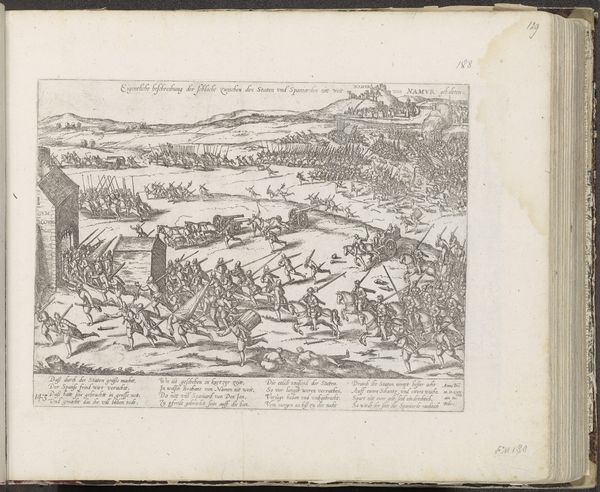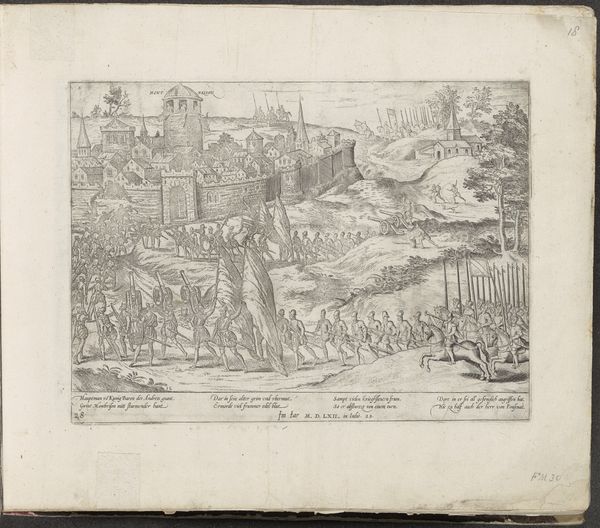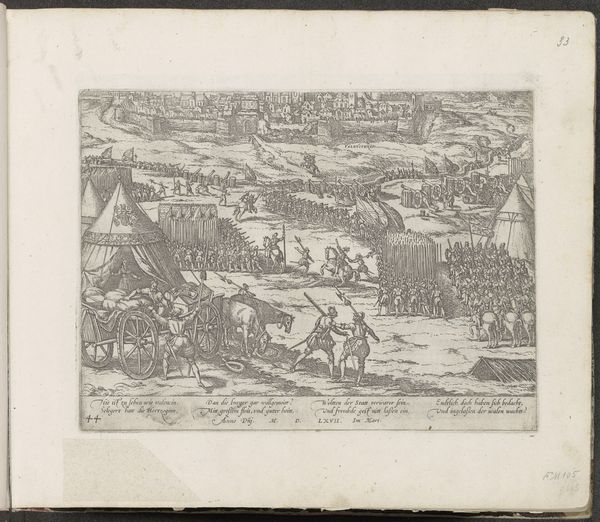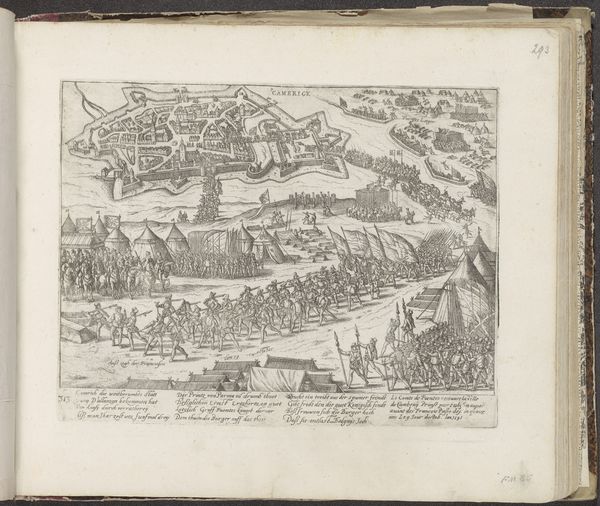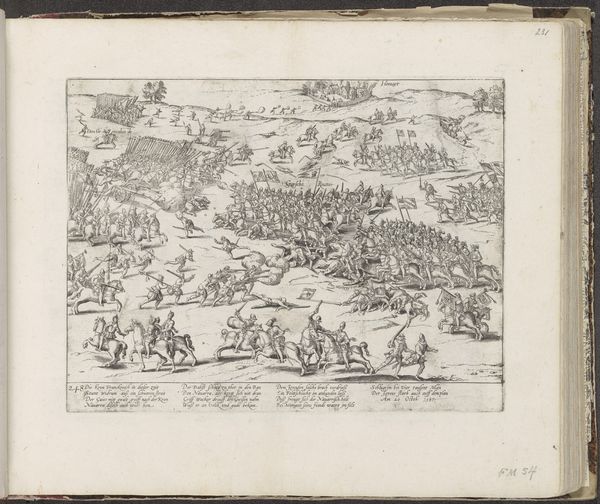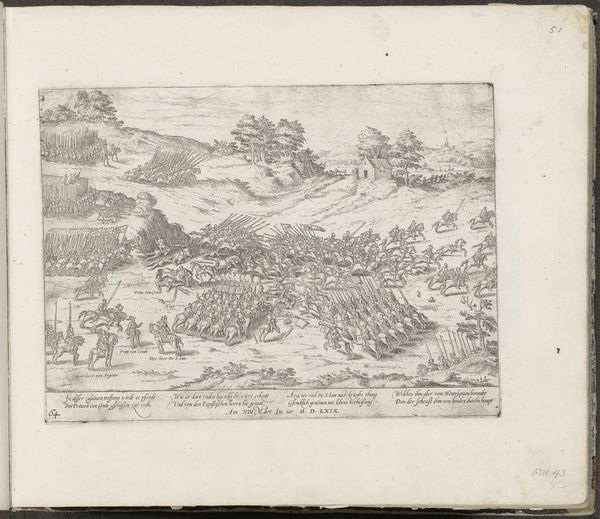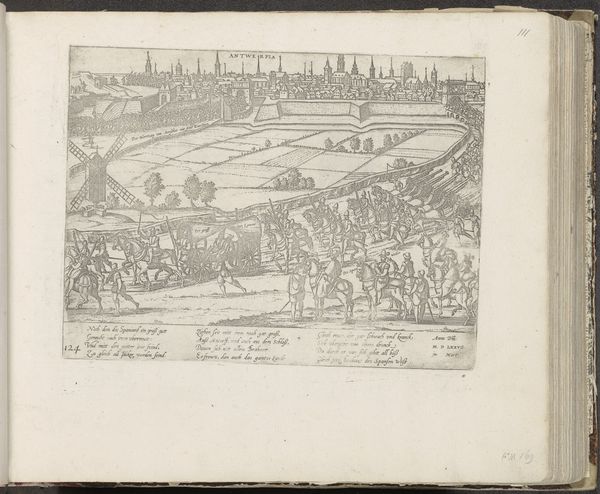
print, engraving
#
narrative-art
# print
#
line
#
cityscape
#
history-painting
#
engraving
Dimensions: height 211 mm, width 281 mm
Copyright: Rijks Museum: Open Domain
This print, made by Frans Hogenberg in 1567, uses etching to capture a moment of political significance. Etching, unlike direct engraving, involves coating a metal plate with wax, scratching an image into it, and then bathing the plate in acid, which bites away the exposed lines. The resulting image has a distinctive quality, a kind of wiry precision well-suited to the depiction of this historical scene. The choice of etching speaks to the era's burgeoning print culture, where images could be reproduced and disseminated widely, influencing public opinion. Look closely, and you’ll notice the fineness of the lines, achieved through skilled manipulation of acid and metal. Consider the labor involved: the meticulous preparation of the plate, the steady hand guiding the etching needle, and the careful inking and printing process. By understanding the work that went into creating this image, we appreciate not only its artistic merit but also its role as a piece of media, commenting on the political tensions of its time. It challenges the idea of “fine art,” instead showing the powerful blend of craft, information, and social commentary.
Comments
No comments
Be the first to comment and join the conversation on the ultimate creative platform.
